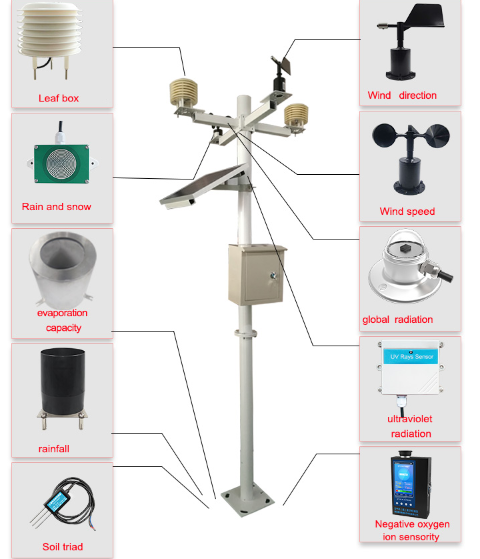Met stations play a crucial role in environmental monitoring, providing essential data for weather forecasting, climate analysis. This article will explore the significance of met station in environmental monitoring, their applications, and the impact they have on sustainable resource management.
Understanding Met Stations

Weather station is a kind of instrumentation facilities, can in the shortest time measuring temperature, humidity, air pressure, wind speed and other parameters. These stations are strategically located across different geographical regions to collect comprehensive and accurate data on weather and climate conditions.
Applications of Met Stations in Environmental Monitoring
Weather Forecasting: Weather stations provide critical data for weather forecasting, enabling meteorologists to predict weather patterns and severe weather events.

Climate Analysis: Met station contribute to long-term climate analysis by collecting historical data on temperature, precipitation, and other climate variables. This data is essential for understanding climate trends and variability.
Environmental Monitoring: Met Vstations play a vital role in environmental monitoring by providing data on air quality, atmospheric pollution.
Agricultural and Natural Resource Management: Met stations support agricultural and natural resource management by providing data for irrigation scheduling, crop management.
Impact of Met Stations on Resource Management
The availability of comprehensive meteorological data from stations has significantly impacted sustainable resource management. Here are some of the key impacts of meteorological stations on sustainable resource management:

Disaster Preparedness and Response:
Meteorological stations provide essential data for disaster preparedness and response, enabling authorities to issue timely warnings and take preventive measures against extreme weather events.
Water Resource Management:
Weather data from stations supports water resource management by providing information on precipitation patterns, evapotranspiration rates, and drought monitoring.
Energy Production and Distribution:
Meteorological stations contribute to the efficient production and distribution of renewable energy sources such as wind and solar power by providing data on wind speed, solar radiation, and atmospheric conditions.
Urban Planning and Infrastructure Development:
weather data from stations is used in urban planning and infrastructure development to assess climate risks, design resilient structures, and optimize energy-efficient building practices.
Future Developments in Met Stations
The field of meteorological stations is expected to witness significant advancements in the coming years, driven by technological innovations and the growing demand for accurate and real-time weather and climate data. Future developments in meteorological stations are anticipated to include:
Advanced Sensor Technologies:
Advancements in sensor technologies will lead to the development of more accurate and reliable instruments for measuring atmospheric parameters, enhancing the quality and precision of weather data.
Remote Sensing and Satellite Integration:
Integration of remote sensing and satellite technologies with meteorological stations will expand the coverage and scope of data collection, providing a more comprehensive view of weather and climate conditions.
Data Analytics and Modeling:
Meteorological data will use data analysis and modelling techniques;Hence improved weather forecasting and environmental impact reviews.
Climate Change Monitoring:
Weather stations will play a key role in monitoring and analysing the effects of climate change. To provide data for mitigating the environmental and social impacts of climate change.
Conclusion
In short, weather stations are an important part of environmental monitoring. Provide key data for weather forecasting and climate analysis. Weather stations create a more sustainable and resilient future in managing natural resources.
